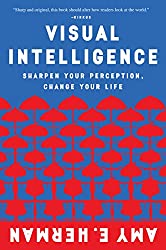
Rating: 7.9/10.
Book about the principles of design, using examples from everyday objects that we’re familiar with, like doors, clocks, faucets, etc. The first job of the designer is to communicate to the user what actions are possible on the item (affordances) and where should the action be directed (signifiers), for example, a handle signals that something can be pulled. Without signifiers, the functionality may exist but the user has no way to discover them. The design must enable a conceptual model in the user’s mind that maps controls to functions, and effort should be made to ensure this mapping is as natural as possible.
Users often blame themselves for failing to understand how to use a product, but often the design is at fault. Feedback is necessary to communicate the state of the internal system that is otherwise invisible, so the user can knows how to make adjustments to achieve the desired result.
Next, design must account for limitations of human memory. Short-term memory can only hold a few things at a time; people only know what is necessary to complete a task and not additional details. A good principle is to make the information available “in the world”, ie, written down or remembered by the device, to reduce the demands on the user’s memory.
Constraints are powerful tools to guide users towards the correct action, when there are enough constraints, it is often possible to complete a task without instructions through the process of elimination. A different kind of soft constraint is convention, so the user expects things to work a certain way. Standardization is useful when there are many competing design solutions, although it’s hard to get everyone to agree on a standard.
When errors happen, we shouldn’t blame the human operator, usually the design is at fault. Common errors result from slips (intending to do one action but doing another) or memory lapses; design should anticipate common types of errors and take steps to avoid bad outcomes. There is a cultural component to safety as well, too much focus on efficiency leads to a culture where safety concerns are routinely ignored until something catastrophic happens.
Design is an holistic discipline that needs to consider the needs of the user, engineers, marketers, etc, and works best as an iterative process. Many ideas are easy to conceptualize, but needs a lot of design input to make it workable in practice.
Overall, this book gives a good overview of general design considerations that can be applicable to many products. Most of the advice is fairly uncontroversial and basic, although engineers still often make these mistakes when they forget to think about these considerations. There’s not a lot of specific advice or cases where one design choice is better than another one, it’s mostly examples of bad design where something basic was not considered. Lastly, the writing was quite wordy and repetitive, especially towards the end of the book.



